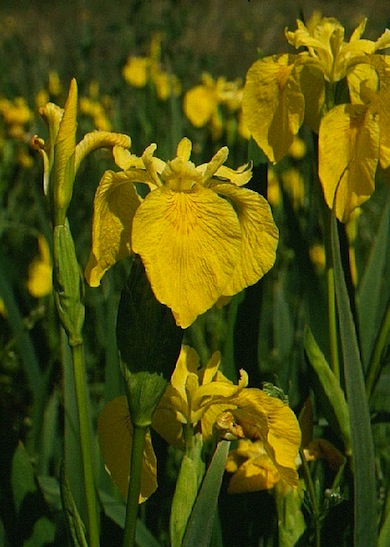This large site, which includes Ickenham Marsh Nature Reserve, Austin’s Lane Pastures and Freezeland Covert, contains a mosaic of fields, old hedges, woodlands, rivers and wetlands. Access is via permissive and public footpaths, including a designated walking route. The reserve is a London Wildlife Trust Site, and the Ickenham Marshes Partnership was established in 2012 to work to improve the surrounding countryside. Volunteers often help with site management, including invasive species control along the river.
Local Wildlife Site
Accessible Sites of Importance for Nature Conservation
Ickenham Marsh, Austin's Lane Pastures and Freezeland Covert
Borough: Hillingdon
Grade: Borough Grade I
Access: Access on public footpaths only
Area: 47.31 ha
Description
Wildlife
Much of the grassland in the fields is currently or formerly grazed, resulting in a mosaic ranging from under to overgrazed. Dominant grasses include meadow, tufted hair-grass, false oat-grass and Yorkshire fog, and other grassland plants include meadowsweet, sneezewort and red bartsia. The fields also include unmanaged roughland, horse-grazed pastures, and meadows which undergo sporadic hay cropping. The extensive native hedgerows are dominated by hawthorn and blackthorn, interspersed with oak, dogwood, and crack willow. Some hedges have seasonally wet ditches with plants such as yellow iris and water pepper. Woodlands are dominated by oak, with a dense canopy and shrub layer. Ground plants include giant fescue, hairy brome and lesser spearwort. Freezland Covert is an area of dense damp woodland which provides habitats for a good range of birds, invertebrates and mosses. The river is home to fish and plants including water chickweed, reed canary-grass and marsh bedstraw. To the north-east is a pond with a large associated permanent flush. Five species of rush occur here, including toad rush and jointed rush, as well as celery-leaved buttercup. To the south east, meadows have become landlocked following road development to the south, and are no longer accessible to cattle or horses. The margins include native hedgerows with trees, and there is little scrub. Poorly drained areas support marsh foxtail, celery-leaved buttercup, hemlock water-dropwort and soft rush. A wide range of butterflies such as Essex skipper, small copper and marbled white fly at the site, as well as numerous hoverflies and solitary aculeates. Sparrowhawks occur in the hedgerows, and buzzards regularly circle high above the site.Facilities
No information available
Yellow irises © Mike Waite
Feedback
Have a question or a comment for this site, or notice anything missing or out of date? Please contact us.
